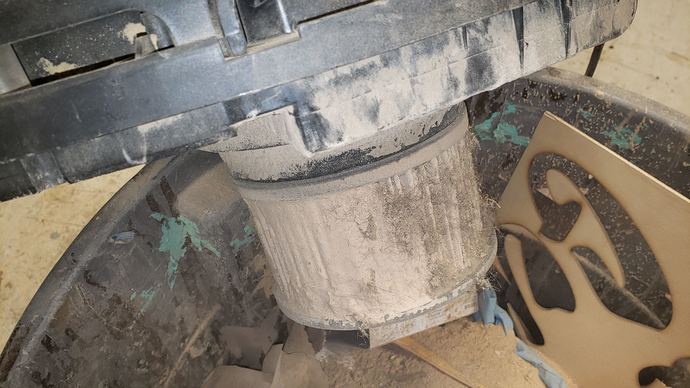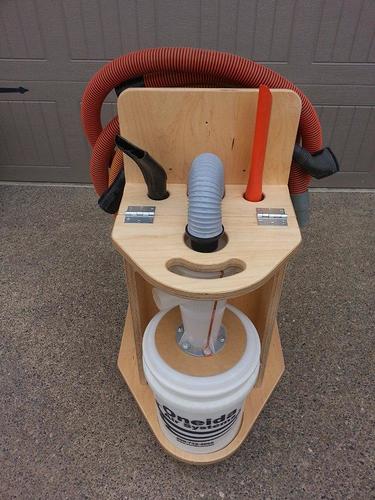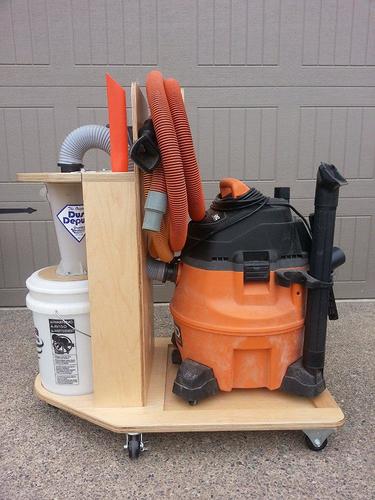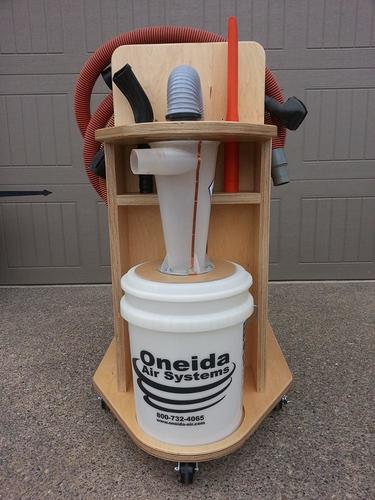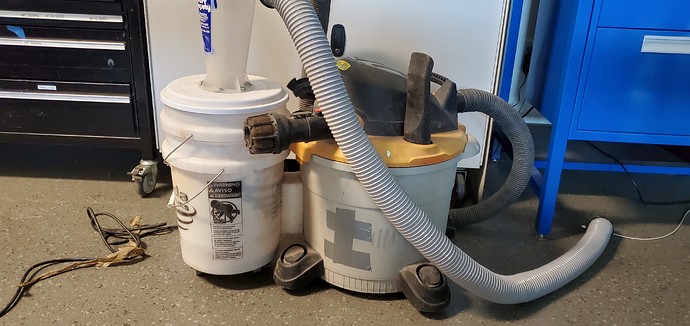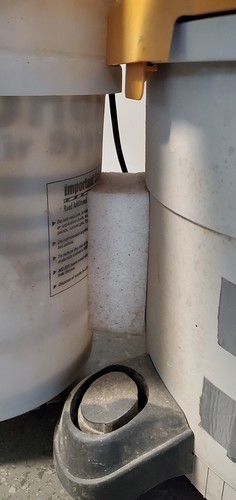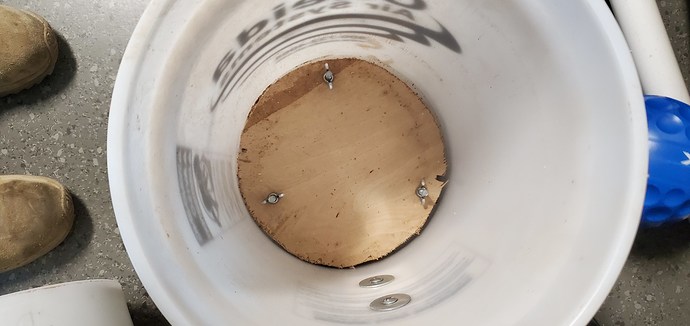I gathered all of the shop vacs today and went through them, since several are not working.
Of the 5 Vacmasters, only 2 motors are working. All of the filters were in sad condition. Below is pretty much what they looked like. With filters like this, it is no wonder that the motors are dying. I combined hoses and containers to put together 2 working vacuums with hoses that can accept attachments, and cleaned out the filters. The good hose ends can attach directly to some tools, such as a DeWalt orbital sander.
Of the 3 non working, one had about 12 inches of cut off lamp cord. I tagged these three and put them under the loft. I didn’t want to take them straight to the dumpster, in case someone wants to go to the effort to rebuild.
There is a small Shop Vac which works. It needs filters. Stored to left of miter saw.
There is an old Husky vac, over by the miter saw. No hose, the motor runs, the filter was broken. I cleaned out that area under the counter and put it back, along with the little Shop Vac. Personally, I don’t think that the Husky is worth replacing the hose and filter on.
There is a small vac by the CNC with a cyclone collection attached. It works, but there is no hose leading into the cyclone, with which to clean up dust.
I went through the can of dust collector parts, by the table saw. Nothing useful for the other vacuums, but there are a couple of 3D printed manifolds, along with the other cyclones and PVC components. I remember those being mentioned in earlier dust collection conversations.
My suggestion is to trash the non working Vacmasters, and get rid of the Husky. Then get a couple more of the same model VacMaster. The Shop Vac is tiny, but it’s working and only needs cheap filters.
The small cyclone system needs a hose. I did not dig through the Shark station.
Here are links for the Vacmaster filters, including the exit filter, and new vacuums, if we want to replace any.
Vacmaster 4 Gallon Washable Cartridge Filter & Retainer, VFCF https://www.amazon.com/dp/B002MUAGG4/ref=cm_sw_r_em_apa_fabc_faI7Fb2MPNJE1
Exhaust filter, VFHF
New Vacmaster vacuum:
ShopVac filter numbers
Foam sleeve 90585
Paper disc, 90107, 90137
There is no retainer ring for the paper filter.
Husky Vacuum Model number:
HV06000
Filter: VF4000, VF5000, VF6000
